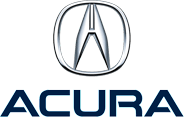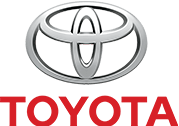A drivetrain is a term used to describe the components of a vehicle that create power (the engine) and then transfer that power to the wheels, allowing the vehicle to move. Understanding the basics of a drivetrain and its various components is important for all motorists. In this article, we will delve into the definition and importance of a drivetrain, explore its different components, discuss the various types of drivetrains, and shed light on how exactly a drivetrain works.
Understanding the Basics of a Drivetrain
At its core, a drivetrain is the system of parts and mechanisms that work together to transfer power from the engine to the wheels, enabling the vehicle to move. This mechanical power transfer is crucial for any vehicle to operate effectively and efficiently. A well-functioning drivetrain ensures a smooth and reliable driving experience.
When examining the design of a drivetrain, it is important to note that the components involved are designed to withstand a variety of forces and speeds. The engineering of these parts allows for the seamless transfer of power, ensuring that the vehicle moves with optimal performance.
Definition of a Drivetrain
The drivetrain consists of the engine, transmission, driveshaft, differentials and axles, all working collectively to deliver power to the wheels. It serves as the vital intermediary between the power generated by the engine and the movement of the vehicle.
The engine, often referred to as the heart of the drivetrain, creates the power needed to propel the vehicle forward. This power is then transmitted through the transmission, which converts it into the appropriate torque and speed required for the wheels to turn. The driveshaft transfers this power to a differential (or differentials) which power the axles, which in turn rotate the wheels, setting the vehicle in motion.
Importance of a Drivetrain in a Vehicle
A drivetrain system is clearly essential for any vehicle to function. It provides the necessary torque and speed required for the wheels to propel the vehicle forward or backward. Without a properly functioning drivetrain, a vehicle would be unable to accelerate, decelerate, or change direction effectively, rendering it immobile and inoperable.
Moreover, a well-maintained drivetrain contributes to improved fuel efficiency, reduced emissions, and overall better performance of the vehicle. It ensures that power is transmitted smoothly and efficiently to the wheels, optimizing the vehicle’s capabilities.
Regular maintenance of the drivetrain components, such as checking fluid levels, inspecting for wear and tear, and ensuring proper alignment, is crucial to prolonging the lifespan of these critical parts. By keeping the drivetrain in top condition, drivers can enjoy a smoother ride, better fuel economy, and increased longevity of their vehicle.
Components of a Drivetrain
For the drivetrain to perform its task proficiently, it relies on several key components working in harmony. Let’s take a closer look at each one:
The Engine
The engine is the heart of the drivetrain. It generates power by burning fuel, usually gasoline or diesel, and converts it into mechanical energy. This mechanical energy is then harnessed by the drivetrain to propel the vehicle forward.
Modern engines come in various types, such as inline, V-shaped, or rotary, each offering unique performance characteristics. They are equipped with advanced technologies like turbocharging and direct injection to enhance power output and fuel efficiency. The engine’s cylinders contain controlled combustion, driving pistons up and down to create rotational motion, which is crucial for the drivetrain’s operation.
The Transmission
Working in conjunction with the engine, the transmission is responsible for controlling the power generated by the engine and transmitting it to the wheels at varying speeds. It allows the driver to switch between different gears to match the vehicle’s speed and conditions, ensuring optimal performance.
Modern transmissions have evolved significantly, with automatic, manual, and continuously variable transmissions being the most common types. They utilize complex gear systems and hydraulic mechanisms to smoothly transfer power from the engine to the wheels. Some advanced transmissions even have adaptive programming that adjusts shift points based on driving habits and road conditions, further optimizing performance and fuel efficiency.
The Driveshaft
The driveshaft, also known as the propeller shaft, connects the transmission to the differential, which is responsible for delivering power to the wheels. It transfers rotational torque from the transmission to the axles, enabling the wheels to turn and propel the vehicle forward or backward.
Driveshafts are typically made of steel or aluminum to withstand high torque loads and vibrations. They can be a single-piece or two-piece design, depending on the vehicle’s layout. Constant-velocity joints are often incorporated into the driveshaft to allow for smooth power transfer even at sharp angles, ensuring efficient operation and minimizing wear on the drivetrain components.
The Differential
The differential is fundamentally a gearbox that the driveshaft connects to. In a rear wheel drive vehicle, it takes the front-to-rear power of the driveshaft and converts it to one or both sides of the vehicle to drive the axles. It also allows for a limited amount of slippage between the axles when the vehicle goes around a corner.
The Axles
Lastly, the axles are the connection point from the differential to the wheels. They provide support to the wheels and ensure a smooth and controlled transfer of power, allowing the vehicle to navigate various terrains and conditions.
Axles come in different configurations, such as solid, independent, or semi-floating, each offering specific benefits in terms of load-bearing capacity and off-road capability.
Types of Drivetrains
Drivetrains come in different variations, each with its own unique characteristics and advantages. Let’s explore the most common types:
Front-Wheel Drive (FWD)
In a front-wheel drive system, the engine’s power is transmitted to the front wheels. This design is typically found in smaller cars and offers advantages such as improved fuel efficiency and better traction in slippery conditions. However, it may lack the performance capabilities of other drivetrain types.
Rear-Wheel Drive (RWD)
Rear-wheel drive transfers power from the engine to the rear wheels. This setup provides better weight distribution, enhanced handling, and improved acceleration. It is commonly found in sports cars and larger vehicles, but it may be less suitable for challenging weather conditions.
Four-Wheel Drive (4WD)
A four-wheel drive system delivers power to both front and rear axles simultaneously. It is commonly used in off-road vehicles and trucks, providing excellent traction and maneuverability in challenging terrain. This drivetrain type allows the driver to switch between two-wheel drive and four-wheel drive modes.
All-Wheel Drive (AWD)
All-wheel drive is an advanced drivetrain system that continuously and automatically distributes power to all wheels, based on the driving conditions. It offers enhanced stability, traction, and control in both normal driving and adverse weather conditions, making it popular among a wide range of vehicles and driving preferences.
Now, let’s look more closely at the world of drivetrains and explore some additional details that can help you understand these systems better.
Front-wheel drive (FWD) is not only known for its fuel efficiency and traction advantages, but it also offers a more compact design. By placing the engine and transmission in the front of the vehicle, manufacturers can optimize interior space, providing more legroom and storage capacity for passengers. This design choice has made front-wheel drive vehicles popular among urban dwellers who value practicality and maneuverability in tight city streets.
On the other hand, rear-wheel drive (RWD) has its own set of advantages that make it a favorite among driving enthusiasts. By placing the power delivery at the rear wheels, RWD vehicles achieve a near-perfect weight distribution, resulting in exceptional handling and cornering capabilities. This drivetrain layout also allows for better acceleration, as the weight of the car shifts to the rear during acceleration, providing more traction to the wheels that propel the vehicle forward.
When it comes to four-wheel drive (4WD), it’s important to note that not all systems are created equal. Some 4WD systems are full-time, meaning power is distributed to all four wheels at all times, while others are part-time, allowing the driver to manually engage or disengage the system as needed. Additionally, modern 4WD systems often come with advanced features such as electronic traction control and locking differentials, further enhancing their off-road capabilities.
Lastly, all-wheel drive (AWD) systems have become increasingly popular in recent years, thanks to advancements in technology. These systems use sensors and computer algorithms to continuously monitor driving conditions and distribute power to the wheels with the most traction. This not only improves stability and control on slippery surfaces but also enhances performance and safety in everyday driving situations. AWD systems can vary in their power distribution, with some favoring the front or rear wheels under normal conditions and automatically sending power to the opposite wheels when needed.
By understanding the intricacies of each drivetrain type, you can make an informed decision when choosing a vehicle that suits your needs and preferences. Whether you prioritize fuel efficiency, performance, off-road capabilities, or all-weather traction, there is a drivetrain out there that will enhance your driving experience.
How Does a Drivetrain Work?
Now that we have briefly explored the different components and types of drivetrains, let’s understand how they work collectively:
The Role of Each Component
The engine generates power, the transmission controls and adjusts that power, the driveshaft transmits it to the differential, the differential powers the axles and the axles convert it into motion at the wheels. Each component has a specific role in the power transfer process, making the drivetrain a well-coordinated mechanism.
The Process of Power Transfer
When the engine delivers power to the transmission, it adjusts the speed and torque according to the driver’s input. The transmission then sends this adjusted power through the driveshaft to the differential, which divides the power between the wheels. Finally, the axles convert the power into rotational motion, propelling the vehicle forward or backward.
Overall, the drivetrain’s functionality is a complex and precise operation, ensuring that power is efficiently transferred from the engine to the wheels, enabling smooth and controlled movement of the vehicle.
As motorists, it is vital to have a good understanding of the drivetrain and its components to maintain optimal performance and address any potential issues promptly. With this knowledge, you will be better equipped to appreciate the importance of regular maintenance, make informed decisions when purchasing a vehicle, and enjoy a safe and enjoyable driving experience.


 Free Customer Towing Service
Free Customer Towing Service  Free TrueTest™ Inspection
Free TrueTest™ Inspection  Fast Transmission Services
Fast Transmission Services  Comprehensive Warranty in Denver
Comprehensive Warranty in Denver 

























